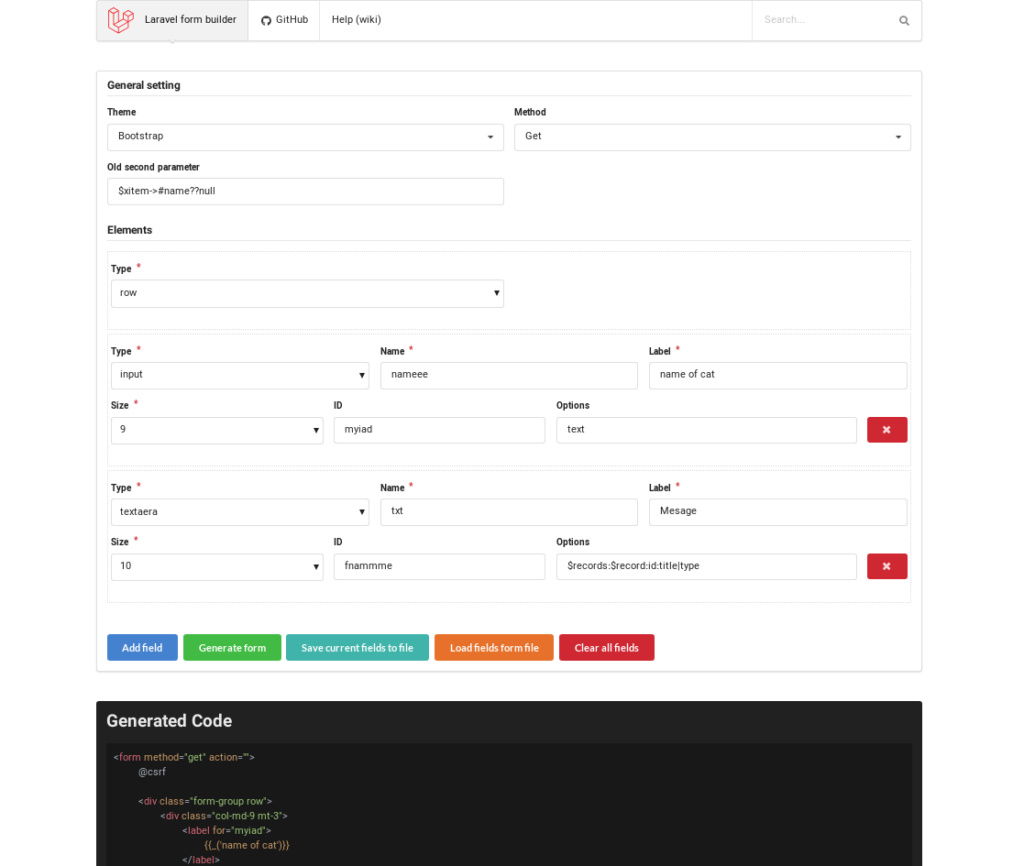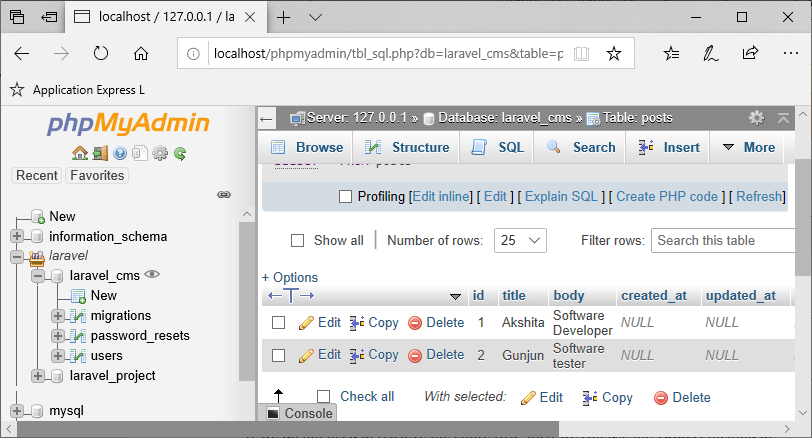

- #Laravel eloquent create does not fill in properties how to
- #Laravel eloquent create does not fill in properties install
- #Laravel eloquent create does not fill in properties update
Laravel provides several commands through Artisan-Laravel’s command line tool-that help us by generating files and putting them in the correct folders. The article should have a title and a body field, as well as a creation date. Let’s get started with our first model and migration-the Article. If you’d like to know more, refer to the Homestead documentation. You can also use Homestead, a Vagrant box specially crafted for Laravel, but that is a bit out of the scope of this article. env file located in the root of the project. Migrations and Modelsīefore actually writing your first migration, make sure you have a database created for this app and add its credentials to the.

When you open localhost:8000 on your browser, you should see this sample page. With Laravel installed, you should be able to start the server and test if everything is working: $ php artisan serve If you don’t want to deal with that, you can also create a new project using Composer: $ composer create-project -prefer-dist laravel/laravel myapp

#Laravel eloquent create does not fill in properties install
After you follow the download instructions (and add to your path environment variable), install Laravel using the command: $ composer global require laravel/installerĪfter the installation finishes, you can scaffold a new application like this: $ laravel new myappįor the above command, you need to have ~/composer/vendor/bin in your $PATH. Setting Up a Laravel Web Service ProjectĪs with all modern PHP frameworks, we’ll need Composer to install and handle our dependencies. Another thing to keep in mind is that you don’t have to implement every action for every resource. Remember that the URLs should not contain verbs and that resources are not necessarily rows in a table. However, there will be cases where it will be hard to map to a Create/Retrieve/Update/Delete schema. I’ve built terrible APIs like that in the past and I still hate myself for it. Some endpoints are pretty straightforward and, as a result, your API will be much more easier to use and maintain as opposed to having endpoints such as GET /get_article?id_article=12 and POST /delete_article?number=40. The greatest advantage of using a set of conventions such as REST is that your API will be much easier to consume and develop around.
#Laravel eloquent create does not fill in properties how to
In the end, you get to decide how to architect resources and models in a way that is fitting to your application. You can have resources represented in more than one data model (or not represented at all in the database) and models completely off limits for the user. In this laravel api tutorial, the resources will have a 1:1 representation on our data models, but that is not a requirement.

Resources will be the targets of the actions, in our case Articles and Users, and they have their own endpoints: Another requirement for the PUT verb is idempotence, which in this case basically means you can send that request 1, 2 or 1000 times and the result will be the same: one updated resource in the database.
#Laravel eloquent create does not fill in properties update
In this article we’ll be using PUT for the update action, as according to the HTTP RFC, PUT means to create/update a resource at a specific location. RESTful APIs are a matter of much debate and there are plenty of opinions out there on whether is best to update with POST, PATCH, or PUT, or if the create action is best left to the PUT verb.


 0 kommentar(er)
0 kommentar(er)
